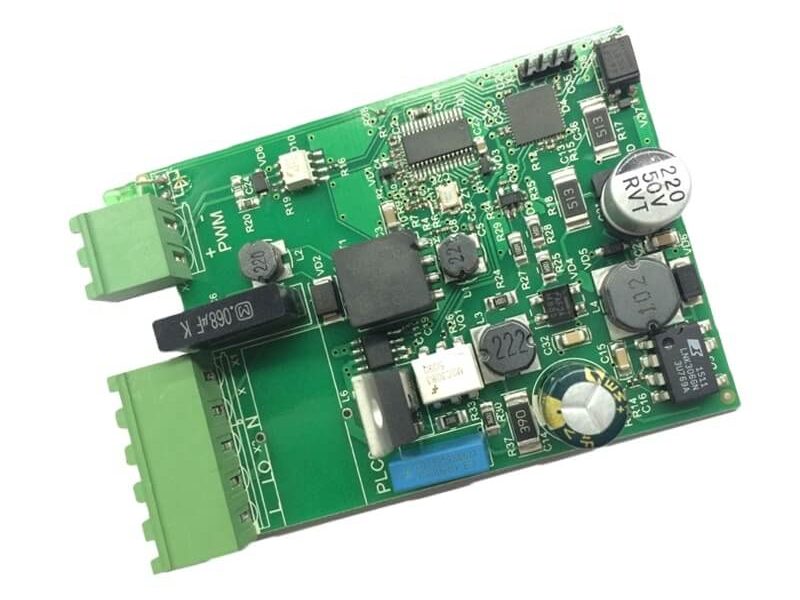
According to IPC standard, through hole solder joint PCBA through tin requirements are generally more than 75% can be, that is say, the welding of the opposite plate surface appearance inspection through tin standard is not less than the aperture height (plate thickness) 75%, PCBA through tin in 75-100% is appropriate. And the through hole is connected to the heat dissipation layer or the heat conduction layer, PCBA through tin is required to be more than 50%.
Affecting PCBA Tin Transferability PCBA Tin Transferability is mainly affected by material wave soldering process flux manual welding and other factors
1.material, high temperature melting tin has strong permeability, but not all of the weld metal can penetrate these components (PCB), such as aluminum metal, usually automatic formation on the surface of the protective layer of dense, and the molecular structure of the internal differences make it hard for other molecules to penetrate into the second, if the weld metal surface oxide layer, can also prevent penetration, we usually use flux processing, or gauze clean down
2 .Flux is also an important factor affecting the poor tin penetration of PCBA. Flux mainly plays the role of removing surface oxide of PCB and components and preventing reoxidation during welding process. Poor selection of flux, uneven coating and too little amount of flux will lead to poor tin penetration. The flux of well-known brand can be selected, the activation and wetting effect will be higher, which can effectively remove the oxide that is difficult to remove; check the flux nozzle, the damaged nozzle needs to be replaced in time, to ensure that the PCB board surface is coated with appropriate amount of flux, so as to play the soldering effect of flux.
3.wave soldering pcba through adverse natural directly with wave soldering tin has a direct relationship, to tin bad welding parameter optimization, such as wave high temperature welding time or speed first, appropriate lower the orbital Angle, and increase the height of the peak, increase the exposure of liquid tin and welding end;Then, increase the temperature of wave soldering, generally speaking, the higher the temperature, the stronger the permeability of tin, but this should consider the temperature of the components can withstand;Finally, the speed of the conveyor belt can be reduced, the preheat welding time can be increased, so that the flux can fully remove oxides, infiltrate the solder end, and increase tin consumption
4.Manual welding In the actual plug-in welding quality inspection, a considerable part of the weldments only have the surface solder forming a cone, but there is no tin penetration in the through hole. In the function test, it is confirmed that many of these parts are false soldering, which is more common in the manual plug-in welding, because the soldering iron temperature is not appropriate and the welding time is too short. Poor tin penetration of PCBA is easy to lead to false soldering, which increases the cost of repair. If the requirement of PCBA tin penetration is high and the welding quality is strict, selective wave soldering can be used, which can effectively reduce the problem of poor solder penetration of PCBA
